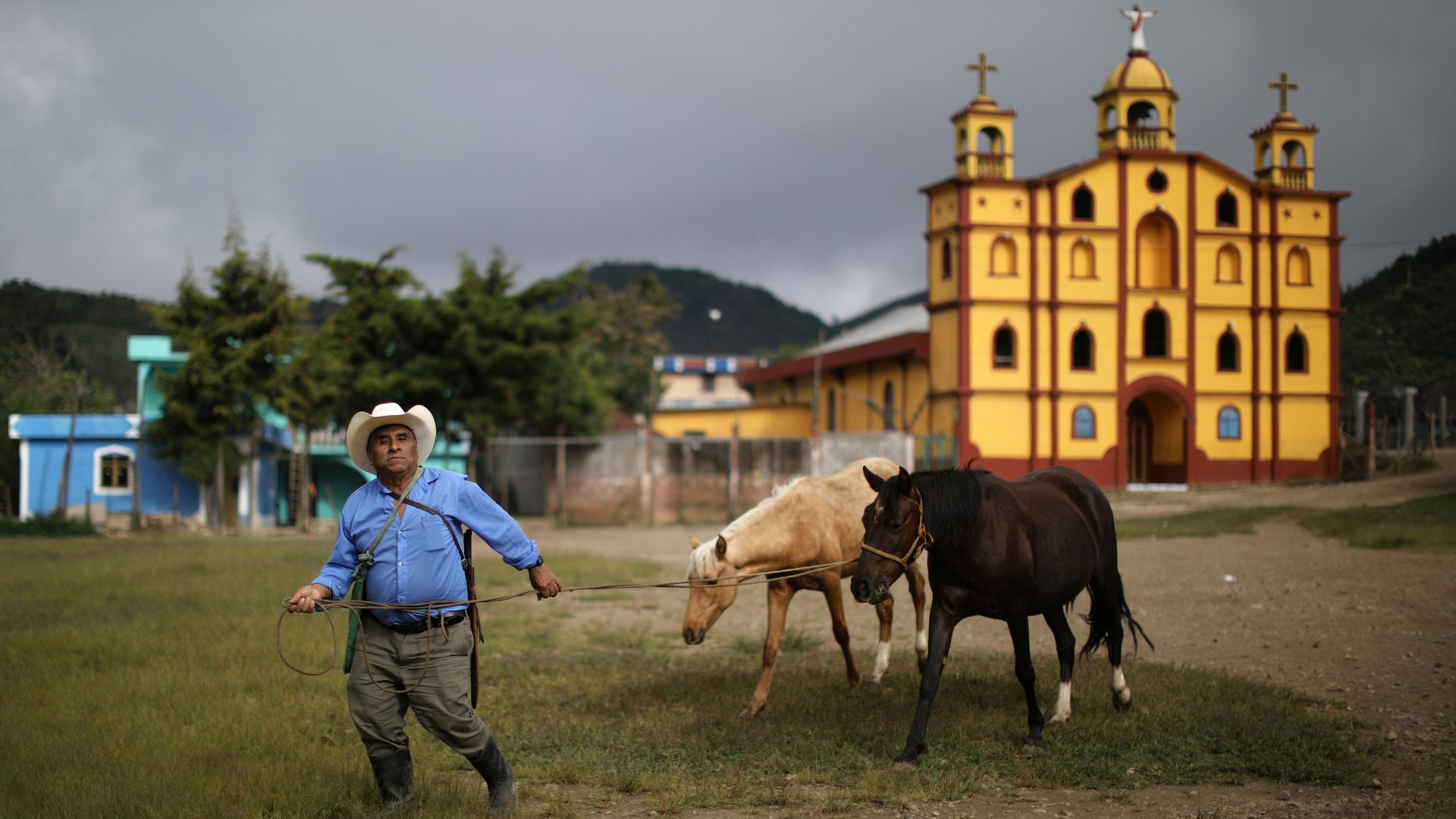The surprising way coffee is fueling migration to the US
The largest group of unauthorized immigrants headed to the US comes from Central America’s “Northern Triangle,” which spans parts of Honduras, El Salvador, and Guatemala. The majority of those leaving are from Guatemala, and the highest percentage of Guatemalans are from the department of Huehuetenango.


The largest group of unauthorized immigrants headed to the US comes from Central America’s “Northern Triangle,” which spans parts of Honduras, El Salvador, and Guatemala. The majority of those leaving are from Guatemala, and the highest percentage of Guatemalans are from the department of Huehuetenango.
Many families that leave El Salvador and Honduras for the US are escaping unspeakable brutality. The countries have murder rates of 60 per 100,000 people and 42.8 per 100,000, respectively. (The murder rate in the US is 5.3 per 100,000.) The murder rate in Guatemala is far lower, at 26.1 per 100,000, and Huehuetenango, from where the bulk of Guatemalan immigrants originate, is one of nation’s least violent.
Yet, the number of Guatemalan families taken into custody at the southern US border, many of them from Huehuetenango, a major coffee-growing region in the country’s western highlands, has gone up 87% since 2016.
“Current migration flows are a complex regional phenomenon and require multifaceted responses,” US Customs and Border Protection commissioner Kevin McAleenan told the Washington Post last year. “Migrants are not leaving for one reason.” According to Dean Cycon, an environmental lawyer who founded the socially conscious Orange, Massachusetts roastery Dean’s Beans in 1993, coffee is one of the major “push factors” driving them elsewhere in search of better lives.
“The international price of coffee hasn’t been this low in over a decade,” Cycon, who has worked with coffee farmers in Huehuetenango, told Quartz. “As a result, thousands of coffee farmers, and sometimes their entire families, are abandoning their land or their employment on coffee farms and heading north.”
Coffee futures are currently at roughly $1.03 per pound, while the cost of production for a pound of coffee right now is about 85 cents in Huehuetenango, said Cycon. (Other estimates put the cost of production as high as $1.40.) Approximately 70% of that cost is labor, according to Paul Hicks, a water-resource specialist with Catholic Relief Services (CRS) who works with farmers in the coffeelands of Central America.
What it all boils down to is a price for coffee, after costs, “that cannot support families,” said Cycon. The price was well above $3.30 in 1977; it was hovering around 99 cents at the end of 2018.
“The most powerful actors in the industry don’t see a crisis,” wrote Hicks. “The bottom line: Farmworkers are living in deep poverty and they will not escape poverty by harvesting coffee.” Cycon said he pays all of his suppliers at least fair-trade prices: $1.41 minimum per pound for conventional beans and $1.91 minimum for organic. However, he emphasized that he “and many other of the more serious fair trade organizations pay substantially higher” prices for coffee on a regular basis; Cycon said Dean’s Beans recently paid $2.56 per pound for Columbian beans and $3.25 per pound for Sumatran.
According to a 2014 study, consumers are willing to spend 23% more for certified fair-trade coffee, which is represented in only about 5% of the coffee sold in the US. And fair trade comes with its own set of issues, as well.
As prices go down, it becomes more and more challenging to grow coffee. Coffee rust, a disease that wiped out 90% of Sri Lanka’s coffee industry in just 20 years, has affected 70% of Central American coffee plantations since the 2011-2012 season, leaving more than 1.7 million workers unemployed. Climate change has led to severe droughts in the Northern Triangle, hurting crops and depressing prices. The malnutrition rate in Huehuetenango is around 70%.
Though the wholesale price of coffee is the lowest it has been since 2006, the retail price of a cup hasn’t gone down along with it. Starbucks has increased what it charges for a cup of brewed coffee three times in the past three years. There’s about 30 cents worth of actual coffee in a cup of Starbucks, with the rest covering overhead, according to NBC News.
“Consumers are unaware that their favorite coffee company may be pocketing an additional dollar a pound from them that isn’t going to a farmer,” said Cycon. (Speaking to Restaurant Business Magazine last year, a Starbucks spokesperson said, “Evaluating prices periodically allows us to balance the need to run our business profitably while continuing to provide value to our loyal customers and attract new customers.”)
Most big coffee companies buy through brokers and aren’t really aware of what is being paid to farmers, Cycon added. Some pay more for a few of their coffees—usually calling attention to them in marketing materials—and pay the lowest market price for the rest.
“Go to your local roaster and say, ‘Hey, are you paying a reasonable price for coffee? Because if you’re not, you’re driving people off their land,’ said Cycon. “People are screaming about all these immigrants coming up here, but very few are looking back to see why they’re coming.”
This article has been updated with additional detail about the prices Dean’s Beans pays for coffee.